
Packaging efficiency isn’t just about speed. How well your custom packaging solutions work together as a system is just as important. For many facilities, inefficiencies are hiding in plain sight: in the layout of equipment, the distance between stations, or the complexity of material flow. These bottlenecks cost time, increase labor demands, and ultimately reduce profitability.
Optimizing the physical layout of your packaging line is one of the most cost-effective ways to boost throughput, reduce downtime, and future-proof your operation. And it doesn’t necessarily require more space—just smarter design.
In this blog, we’ll walk through common inefficiencies, the principles of efficient line design, the role of modular equipment, and strategies for scaling your operation with confidence.
Packaging Layout Mistakes That Hurt Productivity
Even high-performing teams can struggle when layout issues hold back their workflow. A packaging line might be equipped with top-tier equipment, but if the overall layout isn’t thoughtfully designed, packaging efficiency will suffer. Poor spatial planning creates friction, slowing down production and driving up costs.
In many cases, inefficiencies aren’t the result of one major flaw but rather a series of small, compounding issues. These problems can go unnoticed until they start impacting throughput, labor allocation, or quality control. That’s why it’s essential to regularly assess your packaging environment and identify potential issues in your floor plan, equipment positioning, and process flow.
Here are some of the most common culprits:
- Excessive Travel Between Stations: When materials or products have to be moved too far, it slows the process and increases labor strain.
- Poor Equipment Placement: Equipment that isn’t strategically positioned can create backups and reduce the effectiveness of even high-speed machines.
- Lack of Adaptability: Lines that can’t handle rapid changeovers or varying product formats become a bottleneck as demand or SKUs evolve.
- Underutilized Space: Empty vertical space, overly wide pathways, or unused corners can limit growth and create clutter.
Identifying these issues is the first step toward a more streamlined, productive operation.
The Foundations of a High-Performing Packaging Line
Improving workflow starts with understanding how space, movement, and task organization interact on the floor. The goal is to invest in custom packaging solutions where materials can flow smoothly from one step to the next with minimal friction or downtime.
This requires aligning your physical layout with your production goals, staffing levels, and product variability. When this is done right, even small adjustments can lead to significant gains in packaging efficiency, consistency, and operator satisfaction.
Here are three foundational design principles:
1. Linear Product Flow
The most efficient packaging lines follow a linear flow from start to finish. It minimizes unnecessary turns, loops, or cross-traffic. A straight-line layout reduces complexity, shortens production time, and simplifies training for new staff.

Linear setups help reduce labor requirements, eliminate unnecessary product handling, and lower the risk of quality issues from cross-contamination or handling errors.
2. Minimize Material Handling
Every time a product is moved, there’s a cost. It may be time, labor, or risk of damage. Designing your layout to reduce manual movement between stations can significantly boost overall packaging efficiency.
Pro Tip: Position raw materials and consumables, like labels or packaging film, close to the systems that use them, and eliminate redundant steps in product flow.
3. Create Dedicated Zones
Separating areas for different functions, like labeling, inspection, cleaning, and packing, helps maintain organization and flow. It also supports compliance by reducing cross-contamination and making it easier to pinpoint bottlenecks.
Design Your Line Around Equipment That Works With You
Even a well-designed layout can only go so far without the right equipment to match. If you want to maximize efficiency, you must select systems that complement your space and operational needs.
Maximize Space With Scalable, Modular Equipment
If space is tight, equipment with a small footprint is essential. Modular systems allow you to add components or functionality as production grows, without replacing your existing setup. Instead of investing in a one-size-fits-all system upfront, you can start with what you need today and build on it over time.
This flexibility is especially valuable for growing businesses that may need to adapt to shifting product lines, packaging formats, or throughput goals. Modular equipment can be reconfigured or relocated with minimal downtime, making it easier to respond to market changes or seasonal demands. It’s a smarter, more cost-effective way to stay agile while maximizing floor space.
Choose Equipment That’s Easy to Operate and Maintain
Even the best layout can’t help you if your equipment keeps slowing you down. Equipment that’s easy to set up, adjust, and maintain allows your team to stay productive and minimizes the impact of any needed intervention.
Fast changeovers, intuitive controls, and accessible components can make a significant difference in day-to-day operations. When your team spends less time troubleshooting or resetting equipment, they spend more time keeping production on track.
How Pack Leader USA Equipment Fits Right In
At Pack Leader USA, our labeling systems are specifically designed with workflow efficiency in mind. Our compact, modular systems fit easily into both existing and new lines, offering the flexibility to adapt to evolving layouts.
With user-friendly controls and fast changeovers, our equipment helps reduce downtime and increase throughput, all without taking up valuable space. Plus, built-in accessibility features simplify routine maintenance and reduce training time, allowing your team to handle equipment confidently and independently.
Build a Line That’s Ready to Scale
Packaging lines need to be built with tomorrow in mind. As product demands shift, SKUs increase, or new automation technologies become available, your line must be able to adapt without requiring a full redesign. That’s where intentional layout planning becomes a powerful strategic advantage.

A flexible, scalable layout enables your team to make changes quickly and cost-effectively. Whether you're responding to seasonal spikes, launching new product formats, or adding capacity, the right foundation can help you stay agile without sacrificing packaging efficiency.
Here are a few ways to design your packaging line with scalability in mind:
- Plan for Expansion: Whether you're adding a new product line or increasing output, having designated space and modular equipment makes scaling less disruptive.
- Use Mobile or Modular Components: These allow for easy reconfiguration of the line without a full teardown.
By making flexibility a priority from the start, you can grow efficiently, without needing a bigger facility or full line replacement.
What You Gain from Optimizing Your Packaging Line
Real packaging efficiency comes from how everything works together. A well-optimized floor plan doesn’t just improve speed; it enhances your entire operation, from labor management to quality control.
When your custom packaging solutions are laid out with purpose, every component, from conveyors to cappers to labelers, works in sync. Operators move with less strain, materials flow with fewer delays, and the system as a whole becomes easier to manage, adapt, and scale. These improvements can start showing results almost immediately, while also setting your operation up for long-term success.
Some of the most immediate and long-term benefits include:
- Reduced labor costs and employee fatigue through streamlined workflows and less unnecessary movement.
- Faster throughput and fewer bottlenecks, helping you meet production deadlines more reliably.
- Improved safety and compliance, thanks to clearer traffic patterns and designated clean/inspection zones.
- Easier equipment integration as your needs evolve, allowing you to easily integrate automation or additional labeling systems.
Your Next Steps Toward a More Efficient Line
As you strive to improve packaging performance, your layout and workflow design can be one of your biggest advantages or your greatest bottlenecks. Taking the time to assess your current setup, identify inefficiencies, and invest in modular, space-conscious solutions can dramatically improve your operation’s speed, flexibility, and cost-effectiveness.
If you're looking for ways to streamline packaging efficiency solutions without a full overhaul, our team at Pack Leader USA can help evaluate your layout and recommend equipment options that will best support your growth.
Schedule a free consultation today to discover how our modular systems can make your workflow more efficient.
.webp?width=200&height=114&name=2x-Packleader-logo-large%20(1).webp)

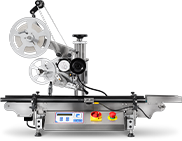
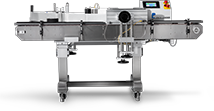
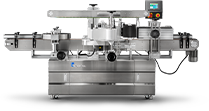
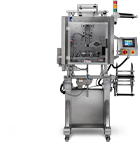
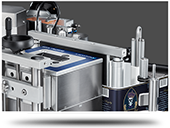
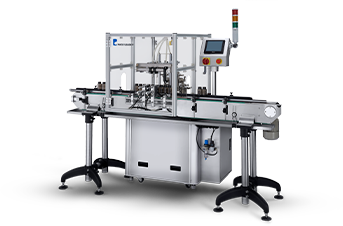

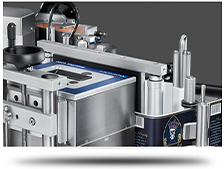





.webp?width=360&name=2x-color-logo%20(1).webp)